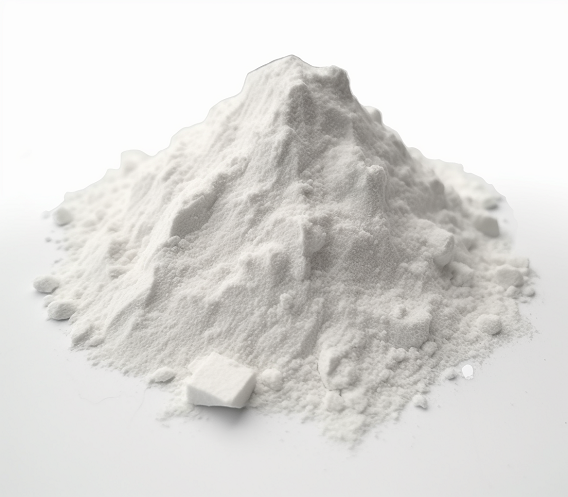
RELATIONSHIP BETWEEN MOLECULAR WEIGHT AND VISCOSITY OF HA
It has been confirmed that HA from different sources has the same primary structure but different molecular weights. The order of HA molecular weight (Mw) ranges from 104 to 107 Dalton. For example, HA that is isolated from bovine vitreous has a lower molecular weight in the range of 104-105 Dalton, while HA from umbilical cord and rooster comb has a higher molecular weight around 106~107Dalton.
Relationship between molecular weight and viscosity
HA has an incredible water-retaining capacity that makes HA solutions highly viscous, so the solution can retain moisture in the eyes, joints, and skin tissues. In the clinical setting, HA solutions have been introduced for various medicinal purposes – osteoarthritis, tissue augmentation ocular surgery, etc. Such clinical applications are strongly dependent on HA’s chain length, that is, the molecular weight. The molecular weight and hydrodynamic volume of HA are closely associated. Intrinsic viscosity has been measured as a parameter of the molecular weight of HA, and the relation between intrinsic viscosity and molecular weight is defined by the Mark-Houwink equation.
[η]=KMα
This equation describes the dependence of the intrinsic viscosity of a polymer on its relative molecular weight. Where [η] is the intrinsic viscosity, K and α are constant the values of which depend on the nature of the polymer and solvent as well as on temperature and M is usually one of the relative molecular mass averages.
Exploring the Relationship Between Molecular Weight and Viscosity of Hyaluronic Acid
Hyaluronic acid (HA) has become a revered ingredient in skincare and medical applications, renowned for its exceptional hydrating properties and versatility. Among the factors influencing its performance, the relationship between molecular weight and viscosity stands out as a key determinant. Let’s delve into the intricacies of this dynamic connection and understand how it impacts the efficacy of hyaluronic acid.
Understanding Hyaluronic Acid’s Molecular Structure
Hyaluronic acid is a naturally occurring polymer, composed of repeating units of glucuronic acid and N-acetylglucosamine. Its molecular weight, determined by the number of these repeating units, varies widely. This molecular diversity is a crucial factor influencing its behavior and effectiveness in different applications.
Molecular Weight and Skin Penetration
In skincare, the molecular weight of hyaluronic acid plays a pivotal role in its ability to penetrate the skin. Higher molecular weight HAs typically remain on the skin’s surface, forming a moisturizing barrier that reduces water loss and enhances hydration. On the other hand, lower molecular weight HAs can penetrate deeper into the skin, providing hydration in the epidermal and dermal layers.
Viscosity: The Thickness Factor
Viscosity, a measure of a substance’s resistance to flow, is a critical parameter influencing the texture and spreadability of hyaluronic acid formulations. The relationship between molecular weight and viscosity is intricate. Generally, higher molecular weight HAs contribute to a more viscous consistency, creating luxurious textures in creams and serums. This viscosity can enhance the application experience, allowing for smoother and more even coverage.
Tailoring Formulations for Specific Applications
Medical and aesthetic procedures, such as dermal fillers, also take advantage of the relationship between molecular weight and viscosity. Higher molecular weight HAs are often used for deep tissue augmentation, providing longer-lasting volume, while lower molecular weight HAs may be preferred for fine lines and superficial applications.
The Goldilocks Effect: Finding the Right Balance
In formulating hyaluronic acid products, achieving the right balance is crucial. Too high a molecular weight might result in a product that sits on the skin without effectively penetrating, while too low may lead to a product that lacks the desired texture and longevity.
Advancements and Innovations
Ongoing research and technological advancements continue to refine the relationship between molecular weight and viscosity. Innovations in HA processing techniques allow for the creation of products with tailored molecular profiles, providing skin care and medical professionals with more options to address specific needs.
Conclusion: A Symphony of Factors
In the symphony of skincare and medical formulations, the relationship between molecular weight and viscosity orchestrates the performance of hyaluronic acid. Understanding this intricate dance enables product developers, skincare enthusiasts, and medical practitioners to harness the full potential of hyaluronic acid across diverse applications.
As we navigate the evolving landscape of skincare and medical aesthetics, the synergy between molecular weight and viscosity remains a fascinating area of exploration. Stay tuned for further breakthroughs, as science and innovation continue to unlock new possibilities in the world of hyaluronic acid.

In collaboration with public partners, Business connects local businesses and job-seeking residents with government-funded resources.
In collaboration with public partners, Business connects local businesses and job-seeking residents with government-funded resources.